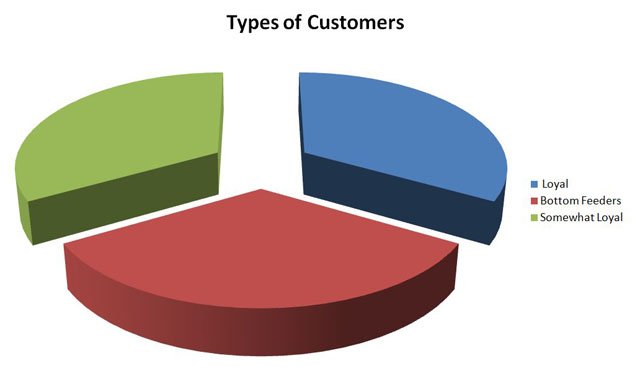Use Good Customer Service Ingredients, and the Proof Is in the Pudding
/“‘The proof is in the pudding’ is a popular figure of speech meaning ‘the quality, effectiveness or truth of something can only be judged by putting it into action or to its intended use.’” – The Word Detective
 We’ve all heard the phrase, the proof is in the pudding. This expression dates back to the early 1600s and is really a derivative of an expanded phrase: The proof of the pudding is in the eating.
We’ve all heard the phrase, the proof is in the pudding. This expression dates back to the early 1600s and is really a derivative of an expanded phrase: The proof of the pudding is in the eating.
This, of course, makes perfect sense because tasting the pudding determines whether it is good or bad.
And so it is with delivering a great FBO customer service experience. You start with the best ingredients and follow the recipe to success. The recipe is very simple:
- An ounce of sweetness in the form of a sincere smile
- Two heaping tablespoons of caring
- One generous cup of reliability and dependability
- And a pound of perceived value
Mix completely, and serve.
Now, all you have to do is ask your customers to find out if your pudding — or their experience — is to their liking. That’s why you should have a good way to collect feedback from your customers through a short customer service survey.
When I say short, I’m talking about a maximum of five direct questions regarding your deliverables. Here are some examples:
- Quality and reliability of line service
- Accuracy and dependability of the customer service representatives (CSRs)
- Timeliness of response to customer service requests
- Cleanliness of the facilities, especially the bathrooms
- Evaluation of the value received
Always add what I call the bonus question: Would you recommend our FBO?
This question is really the most important. It is a key customer service metric, and, if you’d like, it is the litmus test of whether your pudding — the customer service experience — hits the mark or needs some extra ingredients.
Another Way to Test Your Pudding
Of course, customers can be too nice at times and might not want to offend you by being overly critical in a survey.
You should also look at a more definitive metric to see if your hard work at delivering an exceptional customer service experience is really paying off.
A loyal, happy customer remains a customer for a greater length of time. So you should be tracking your customers to make sure they are coming back to your facility every time they travel to your destination. You can use a flight tracking service to monitor incoming flights.
Your line service personnel should become familiar with regular customers’ aircraft registration numbers and be alert when tracking inbound flights to your airport and surrounding airports.
If you haven’t seen a regular customer in a while, pick up the phone and call to learn why. If your line service personnel notices a regular customer going to a competitor, again, pick up the phone and find out what you might have done wrong.
 Source: Strativity Group, in partnership with Customer Service Experts.Research shows that most unsatisfied customers won’t tell you there is a problem before they jump ship. They simply change their buying habits. So you need to know why they made a change and why they became unhappy with your service.
Source: Strativity Group, in partnership with Customer Service Experts.Research shows that most unsatisfied customers won’t tell you there is a problem before they jump ship. They simply change their buying habits. So you need to know why they made a change and why they became unhappy with your service.
Loyal Customers Lead to Financial Rewards
As the chart indicates, a happy customer is a loyal customer and stays with you for a longer period of time. A satisfied customer also tends to spend more and, thus, take on more fuel at your facility.
And oddly enough, a satisfied customer does not need incentives or discounts to continue being loyal. In fact, they do not mind paying a small premium to be treated well.
In the end, the payoff for delivering a truly memorable customer service experience is a contingent of loyal, highly engaged advocates who will recommend you at the drop of a hat.
So it really does pay to include quality ingredients in delivering a good customer service experience. The proof is in the pudding!
If you have some good customer service ingredients you’d like to share, please email me at Ron@thejacksongroup.biz.
Note: This blog was inspired in part by a Bloomberg Businessweek Research Services article titled How to Achieve a Great — and Profitable — Customer Service Experience.
Ron Jackson
Ron Jackson is co-founder of ABSG and president of The Jackson Group, a public relations agency specializing in aviation and FBO marketing. He has held management positions with Cessna Aircraft and Bozell Advertising and is the author of Mission Marketing: Creating Brand Value and co-author of Don’t Forget the Cheese!, the Ultimate FBO Customer Service Experience.












